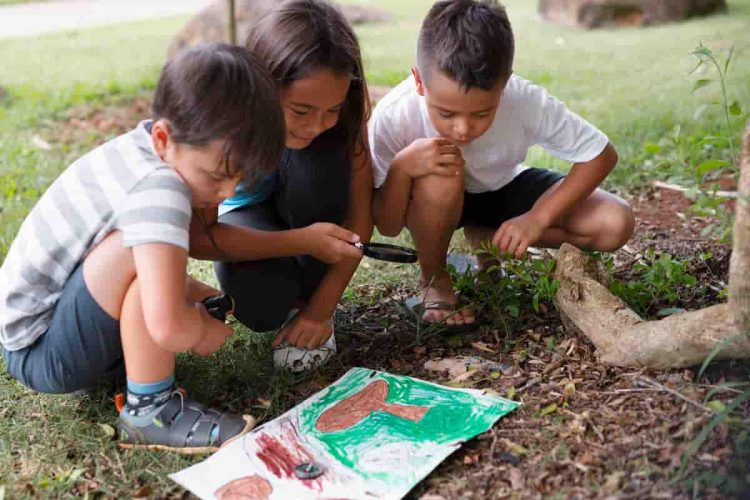Creating a comfortable learning environment for children is one of the most critical things educators can do to promote academic achievement. Comfort in a classroom or other learning environment may directly influence a child’s ability to focus, remember their lessons, and work constructively with classmates.
When youngsters are uncomfortable, it can lead to low engagement and trouble paying attention.
Given the significance of comfort in learning, providing an ideal setting is critical for students to attain their maximum potential. Here are factors to consider when setting up an ideal learning space for kids:
Temperature
Keeping the classroom at a reasonable temperature is critical for an effective learning environment. It might impair your pupils’ comfort levels and ability to focus on the subject if it’s too hot or cold outside; consider installing air conditioners or fans to ensure your classrooms are as comfortable as possible.
Suppose the classroom doesn’t have air conditioning; open the windows if there is a breeze outside. You can keep a thermometer in each room to quickly check the temperature during class and adjust it as needed. If students get too hot or cold, they’ll be less likely to concentrate and retain new information.
Furniture
Furniture can also make a big difference in creating a comfortable learning environment. Students should have big enough chairs and tables that provide support and comfort for prolonged periods of classes.
And this doesn’t have to be limited to the classroom. As they say, learning starts at home—jjust like a baby needs a newborn stroller to support their body and feel comfortable, a student needs a sturdy and comfortable chair to sit and do their work, too. Desks should also have enough space to store books and supplies so that everything is easily accessible.
It’s also essential to make sure that furniture is arranged effectively. This means allowing students to see the board and each other clearly while having personal space.
Lighting
When designing an appropriate learning environment for children, it is equally critical to consider the lighting in the classroom. Although natural light is beneficial, certain classes may require additional indoor illumination. Strike a balance between natural and artificial light so that students are neither blinded by bright lights nor overwhelmed by dimness.
The right lighting can also help make classrooms more pleasant and warm, encouraging involvement and focus.
If nap time is required, install blackout curtains for deep, rejuvenating sleep during the day.
Noise Level
Excessive noise can be distracting and make it difficult for students to focus. To keep noise levels low, consider implementing a “no talking in the hallways” rule or employing sound-absorbing materials such as carpets and furniture.
Set up quiet areas throughout the classroom for kids who need a break from the noise. Some youngsters may benefit from noise-cancelling headphones if they need to shut out sounds.
Social Interaction
Children must feel comfortable with their classmates to learn effectively. As a result, creating a safe and supportive atmosphere for students to interact is vital.
Encourage students to participate in group activities that allow them to practice teamwork, communication, and problem-solving skills. Team-building exercises such as debates or interactive case studies may help everyone feel engaged in the conversation.
Motivation and Engagement
A critical factor in creating an optimal learning environment for kids is ensuring they stay engaged and motivated. Constant testing and memorisation can be boring for kids, so finding strategies to keep them engaged and challenged is essential.
Game-based learning can help students stay engaged with the topic. You may also offer incentives such as awards for task completion or additional credit for hard effort on projects.
Accessibility
Ensure that students with disabilities or special needs have access to the space. Changes to the classroom can make it easier and more comfortable for kids to move about, use materials, participate in activities, and interact with classmates.
For example, you could make workstations low enough for wheelchairs, add braille labels to bookcases, or build ramps for easy access. Students with physical or learning challenges might benefit from assistive technology and speech recognition software.
Safety Considerations
When it comes to building an ideal learning environment for children, safety is also critical. Check whether all supplies are appropriately stowed, if there is adequate ventilation, and if the furniture is sturdy and safe.
Maintain clear and well-lit exits so students can get out in an emergency. Fire drills and other safety practices should be done regularly to ensure everyone is prepared for emergencies.
Finally, ensure a first-aid kit is in the classroom in case of minor accidents or illnesses.
Final Thoughts
Creating an optimal learning environment for kids requires careful planning and consideration. From lighting and noise levels to social interaction and safety considerations, ensuring that every aspect of the learning environment is effective for learning is essential.
Considering all these factors and making the necessary adjustments, you can create a classroom setting where students feel comfortable, supported, and motivated to learn. Students can thrive and reach their highest potential in an optimal learning environment like this.

